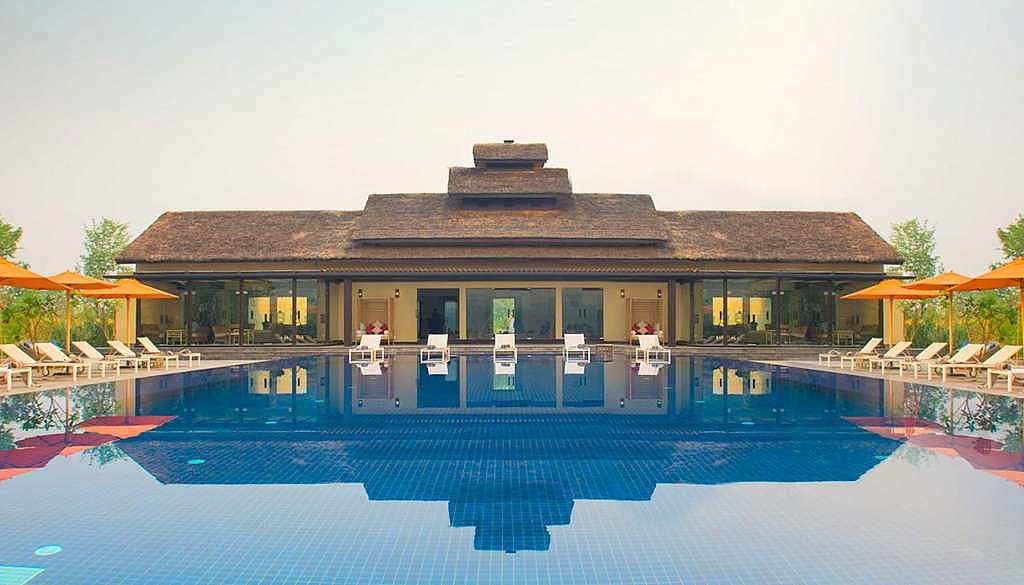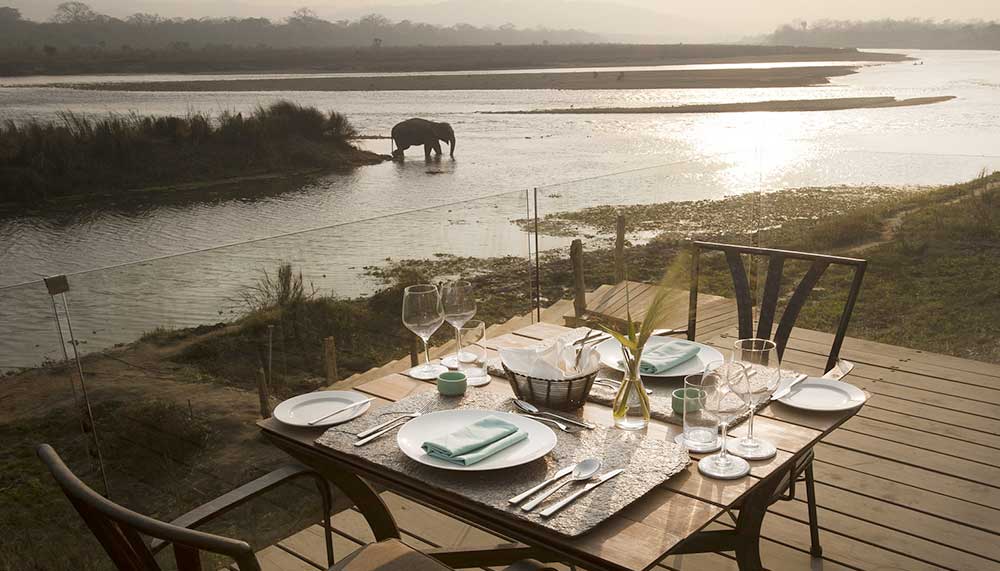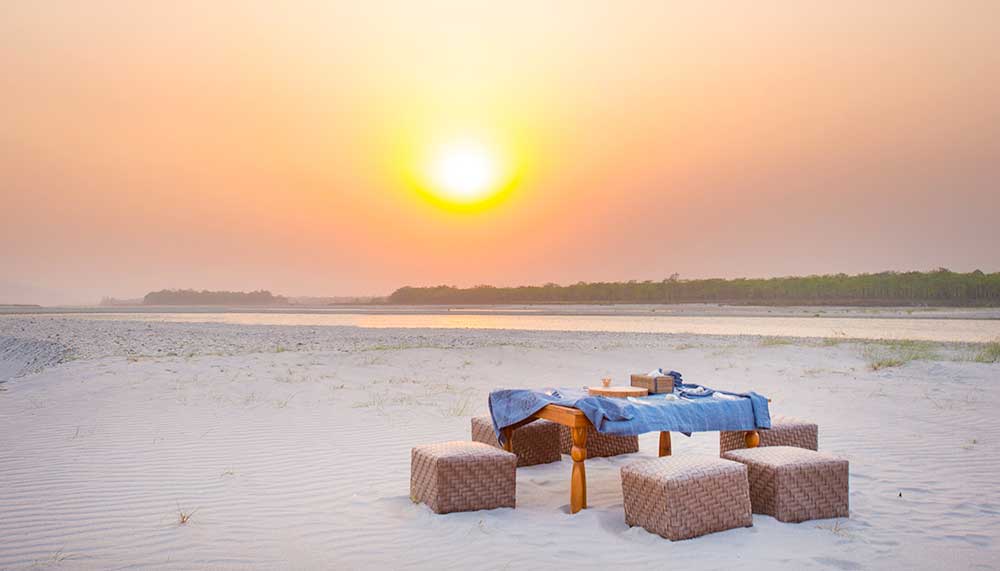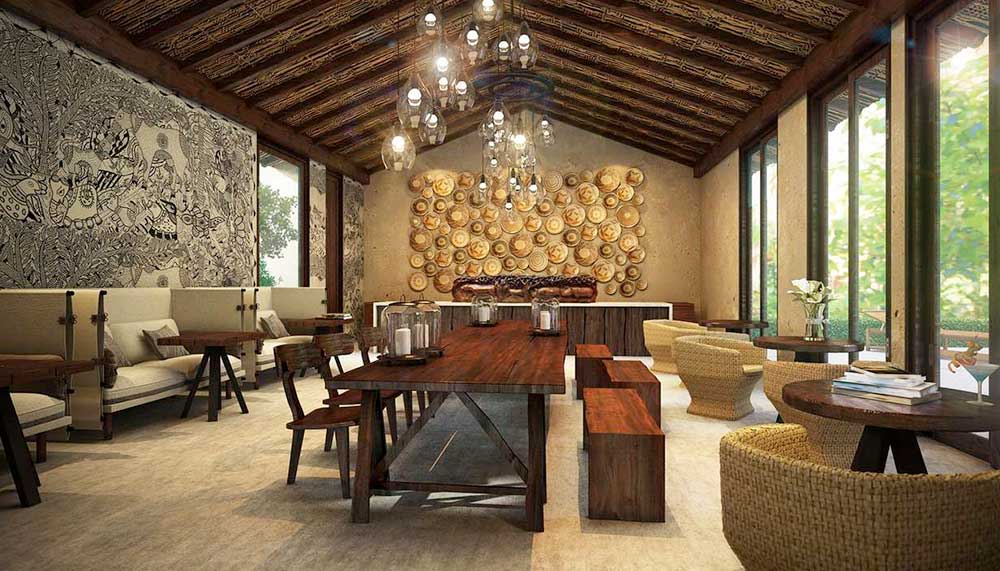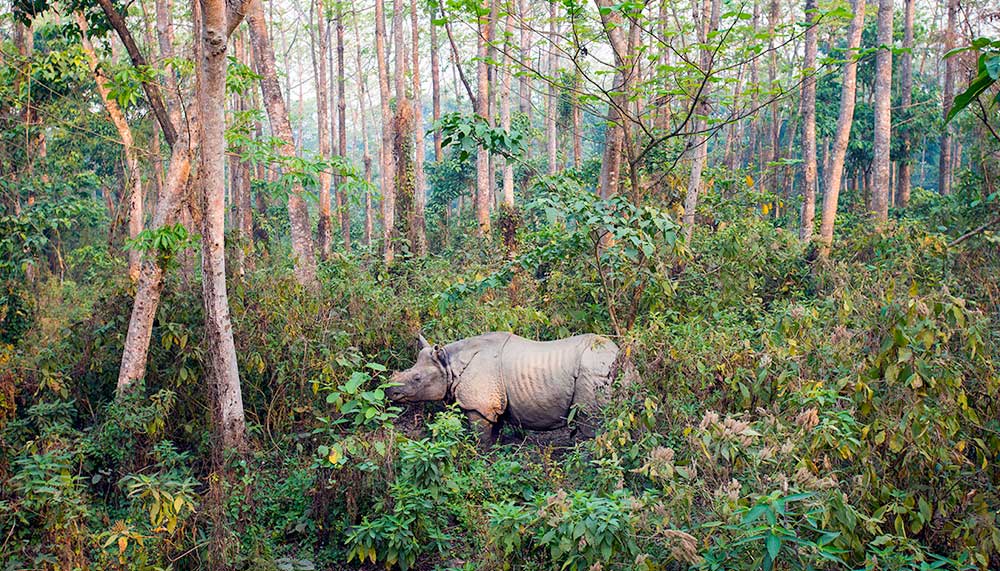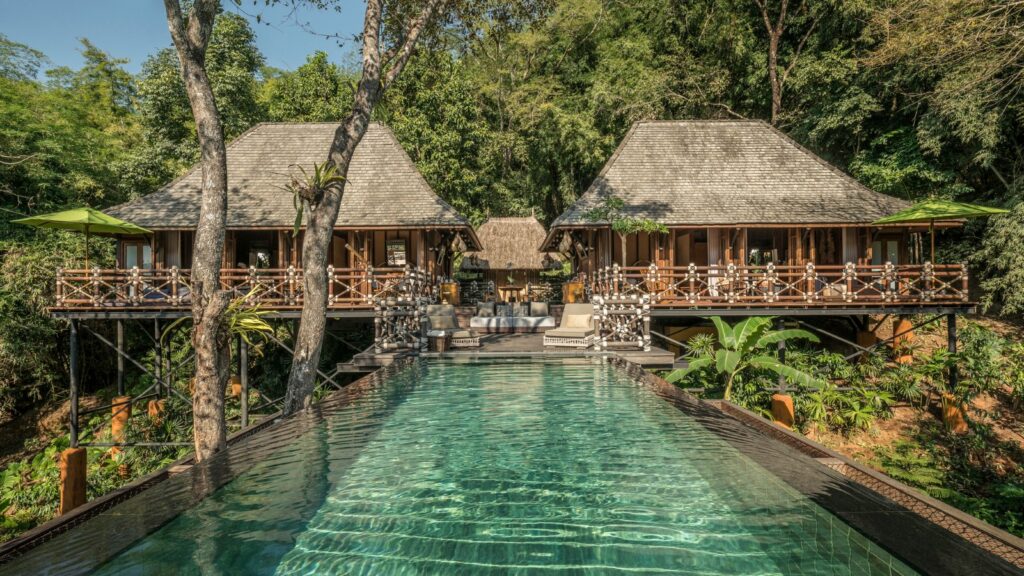A new standard of excellence in Chitwan National Park
The scorching subtropical sun was high and bright when Anjali lumbered her way into the Rapti River. Her giant flat feet slow and powerful, she splashed into the cool waters of the shallow bed and lowered herself with a thud. Perched atop her back, a thin, young mahout beckoned me to climb aboard. Me? I motioned with my thumb and a questioning look. The mahout nodded before bouncing off the great animal’s back with a graceful flourish.
The cold water rushed around my ankles as I stared at the giant mound of wrinkled flesh before me and started pawing at her leathery mass. I raised my leg awkwardly, hoping to catch a gristly nook with my curled toes. Nearby, a group of young boys giggled as I scrambled clumsily onto Anjali’s back and positioned my legs – tiny and weak as they appeared against her massive head – just as she rose onto four legs.
From my elevated vantage point I could see Meghauli Serai, a 30-room Taj Safaris lodge that opened in April 2016 just opposite Chitwan National Park in the jungle-filled lowlands of southern Nepal. The thatched main house, its infinity-edge pool reflecting the sun’s sharp glare, appeared a heavenly mirage amid the region’s sal trees and Terai grasslands. On the sprawling terrace, three guests were finishing the last sips of wine from lunch. To the right, a neat row of 16 villas, each with its own pool, looked out over the park – a 932-square-km UNESCO World Heritage Site known for its population of Bengal tigers, leopards, elephants, sloth bears, and greater one-horned rhinoceroses.
As I sat on the nape of Anjali’s wide neck, I could also make out the edge of the sandy path where, earlier that morning, I followed fresh tiger tracks with Pradeep, a naturalist at Meghauli Serai. Pradeep was tired, as it was the Nepali New Year and the nearby villages had partied until the wee hours. But he perked up considerably at the sight of perfect paw prints. “The tigers must have been up late celebrating too,” he said with a wink. We followed the tracks up and down, back and forth – “she was stalking prey,” Pradeep surmised – winding in and out of the thick groves where locals quietly hacked away at long elephant grass.
Our tiger trek ultimately proved fruitless, but luck had been with me for much of my visit. In the days past I had explored Meghauli Serai’s lush surroundings by 4×4, boat, and even atop an elephant outfitted with a basketlike contraption for carrying guests. We had driven through Chitwan to find two rhinoceroses resting in the shade of a sal tree, while nearby, grey langurs swung from branch to branch, shaking leaves into our sundowners. We had bounced atop the back of the elephant to catch glimpses of such birds as a pied kingfisher and a savanna nightjar, a sight so rare and beautiful it nearly brought a fellow guest to tears. And we had plied the Rapti River alongside wild gharials – one of the world’s largest crocodile species – and swamp francolins.
And yet, none of my wildlife encounters could quite match the thrill of bathing with a domesticated 3-ton pachyderm. As Anjali waded farther into the Rapti, I couldn’t help but recall the gharials – and their formidably long jaws. Deeper and deeper we went, and higher and higher I lifted my legs. Beads of sweat trickled down my back until, suddenly, Anjali dipped her trunk into the water and curled it backward to spray gallons of cold river water on me. Soaking wet, thoroughly cooled, and with surprisingly calmed nerves, I thanked my new friend with a gentle pat on her hairy crown.
